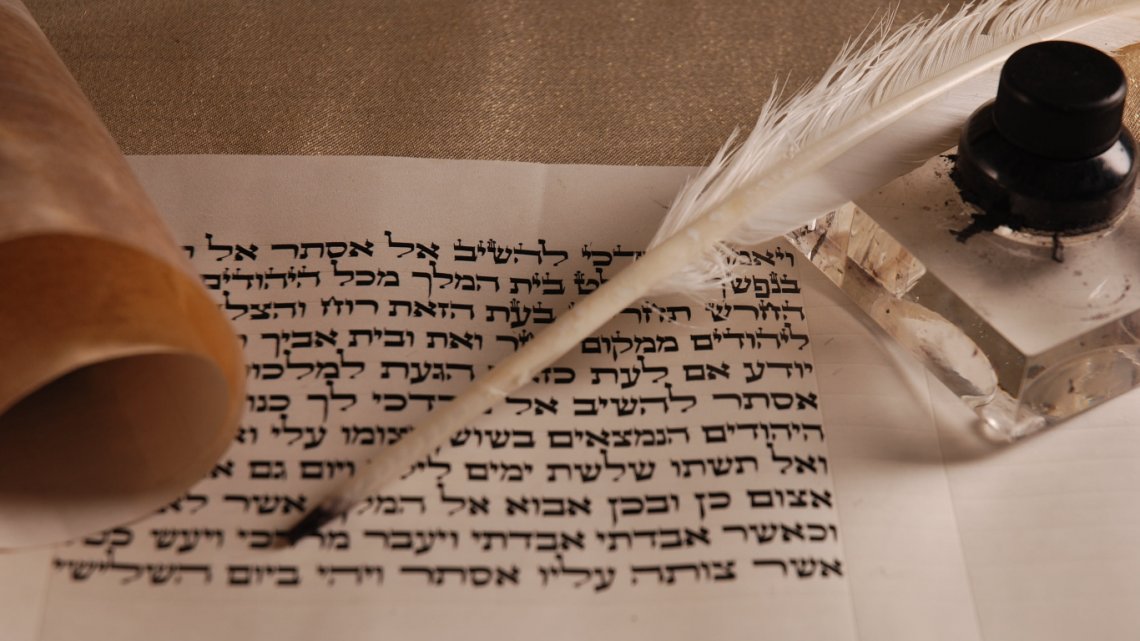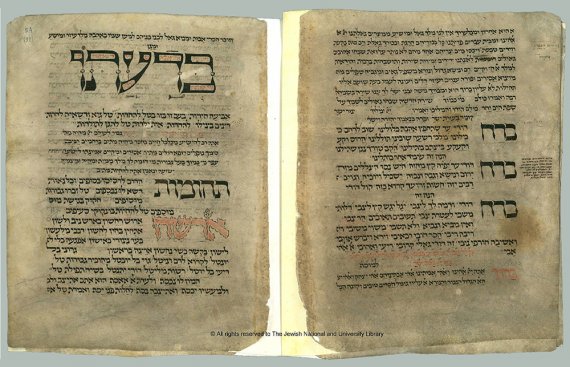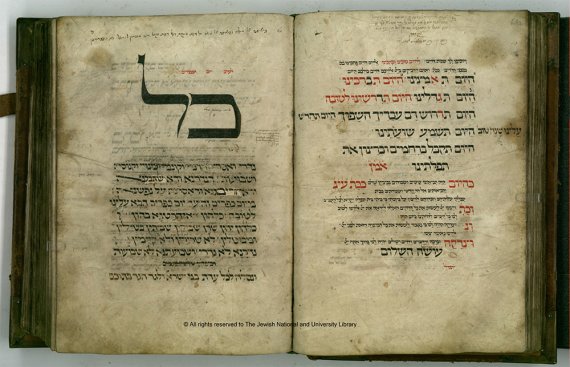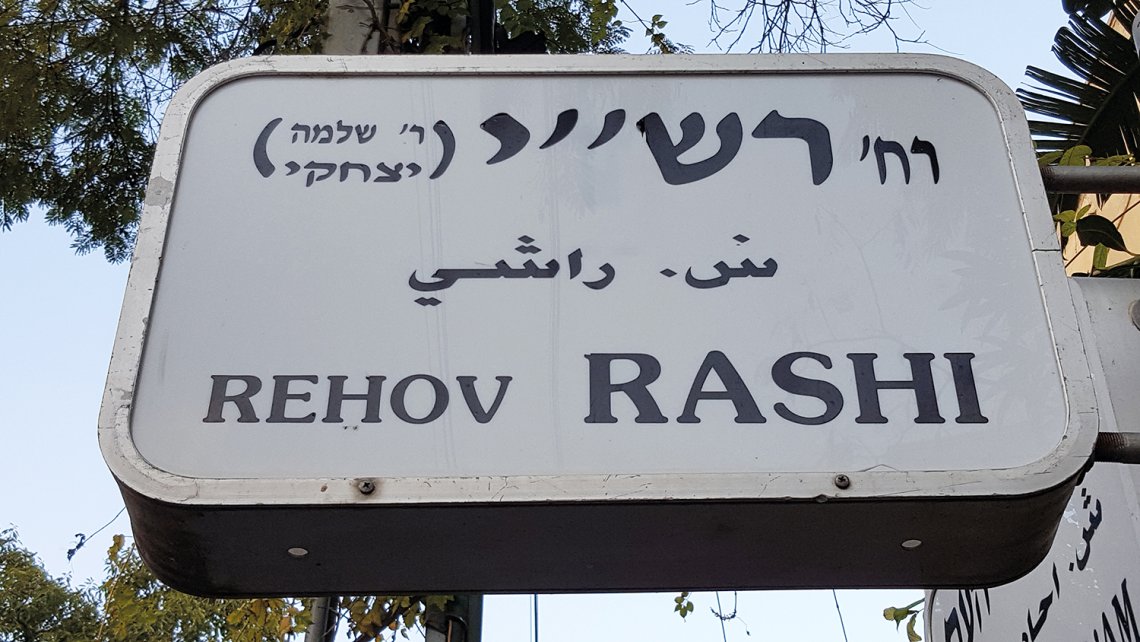Traditions and Tales
»How very much do our teachers in Mainz, in Worms and in Speyer belong to the most learned of the scholars, to the saints of the Most High … from there the teachings go out to all of Israel … Since the days of their founding all the communities respect and follow them, on the Rhine and in all the land of Ashkenaz.«
Rabbi Isaak ben Mose, named Isaak Or Sarua, died ca. 1250
Scholarship: Rashi und ShUM
Rabbi Schlomo ben Jizchak, called Rashi, born around the year 1040 in Troyes, is, next to the scholars of Mainz, a central figure to the long-standing fame of the ShUM-cities. Around the year 1060 he studied first in Mainz and then at a Jewish school in Worms, at that time a highly respected place in the Jewish circles of Europe. In 1065 Rashi returned to Troyes, where he founded his own school around 1070. Rashi died in 1105 in Troyes.
What remained were his words. To this day, every edition of the Babylonian Talmud is printed with the commentary of Rashi. In addition, Rashi’s halakhish responses have also been passed on. In those he addressed social and economic relationships of Christians and Jews as well as controversial questions concerning everyday life, the economy, and communal co-existence within and without the community. Topics were, among others, money markets, pawnshops, real estate business, dietary laws, but also questions dealing with slavery or forced baptism.
Jerusalem on the Rhine: ShUM as reference point
The rabbinates in Speyer, Worms and Mainz were a central authority in religious-cult and legal matters. Their decisions, liturgies and halachic instructions were groundbreaking. This, too, illustrates the special nature of SchUM: in the midst of pluralistic Judaism, characterized by discourse, ShUM was able to assert itself as a trend-setting center. It was unusual for communities to make decisions that had validity in several communities and that radiated beyond them. In 1220, at a meeting in Mainz, the regulations developed in ShUM were written down in Takkanot-ShUM. These resolutions are the most extensive corpus of Jewish community statutes from medieval Ashkenaz. Rites, chants and rules are still known in the Jewish world today. ShUM is a living tradition.
In the 12th century, the Jewish poet David bar Meshullam from Speyer composed a prayer about the pogroms of 1096, which was read out in the synagogue in German communities until the beginning of the 20th century on the eve of the highest Jewish holiday, Yom Kippur.
Until the middle of the 13th century, the SchUM communities remained central places of Central European, Ashkenazi Judaism. After pogroms and expulsions, the communities lost their supraregional importance, but their significance as places of remembrance has survived. In addition, there is an important narrative culture in the ShUM communities. ShUM is present in Europe and the world in a variety of ways and is thus passed on from generation to generation. SchUM is globally significant.
Worms Machzor: from Worms to Jerusalem
Safely stored in the National Library of Israel, the Worms Machzor is one of the oldest known prayer books of the Ashkenazic Judaism and is exceptional evidence for Jewish book design and calligraphy as well as typography of the Middle Ages. The Worms Machzor, created in the 13th century and supplemented in the 14th century with liturgical songs, also contains the heretofore oldest known line in Yiddish. Composed in Yiddish, but written with Hebrew lettering, the blessing means that one who carries this Machzor into the synagogue is designated to have a good day.
The Machzor was for Worms an important testimony of the community history and was used for centuries. The two volumes were saved from destruction during the November Pogrom of 1938, probably because they were stored in a safe of the community and not, as between 1926 and 1934, on display in the Judaica Museum in the rooms of and adjacent to the synagogue. After a long struggle, in 1957 the Machzor was taken to Israel in the scope of the negotiations regarding Jewish cultural treasures without owners. The book is presented by the JNUL as significant documentation of Ashkenazic Judaism and as an expression of the spirit of ShUM.
ShUM-Sites: ensembles, monuments and cemeteries
The ShUM-Sites are composed of various impressive ensembles, monuments and cemeteries; most of them date back to the Middle Ages, others were later built as annexes. Together, they form unique structures. The secured, renovated and, after the Shoah, recovered Jewish monuments and cemeteries bear witness to Jewish life and scholarship in ShUM in history and its tradition to the present day. The monuments reflect the traditions and also the violent breaks. The current situation also shows the acceptance of the heritage far beyond the borders of Germany and its relevance. The architectural heritage is unique - and at the same time an expression of the world of scholarship in ShUM.




